This McDonald’s Is All Out Of “Boy Toys,” via The Consumerist

This McDonald’s Is All Out Of “Boy Toys,” via The Consumerist

The propaganda below, from World War II, was distributed by the U.S. government. In the posters, venereal disease (later known as sexually transmitted disease, and even later as sexually transmitted infections) is personified as a woman. Remember, venereal disease is NOT a woman. It’s bacteria or virus that passes between women and men. Women do not give it to men. Women and men pass it to each other. When venereal disease is personified as a woman, it makes women the diseased, guilty party and men the vulnerable, innocent party.
In this ad, the soldier is made innocent with the label “The Young, The Brave, The Strong.” The first girl is labeled “prostitution.” She says to the soldier: “Two girls I know want to meet you in the worst way.” The two women on the stairs, with the faces of skeletons, are labelled “syphilis” and “gonnorhea.”
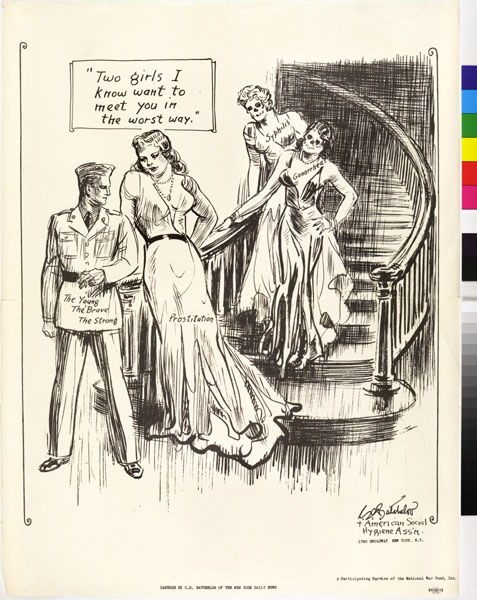
Text: “Warning: These enemies are still lurking around.” The women are labeled “syphillis” and “gonnorhea.”
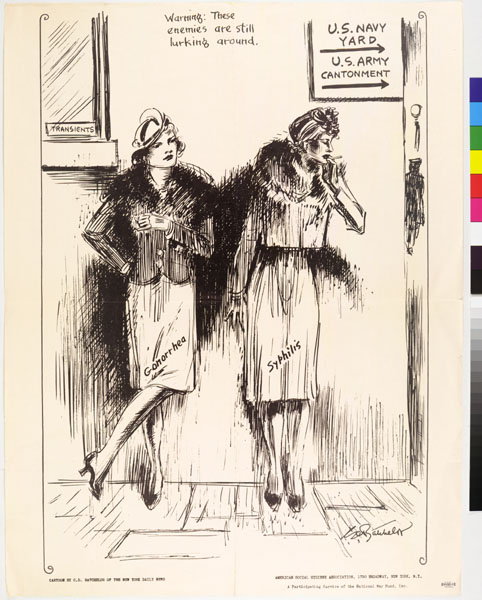
This one is my favorite. A female skeleton in an evening gown walks with her arms around Hitler and Hirohito. The text reads: “V.D. Worst of the Three.”
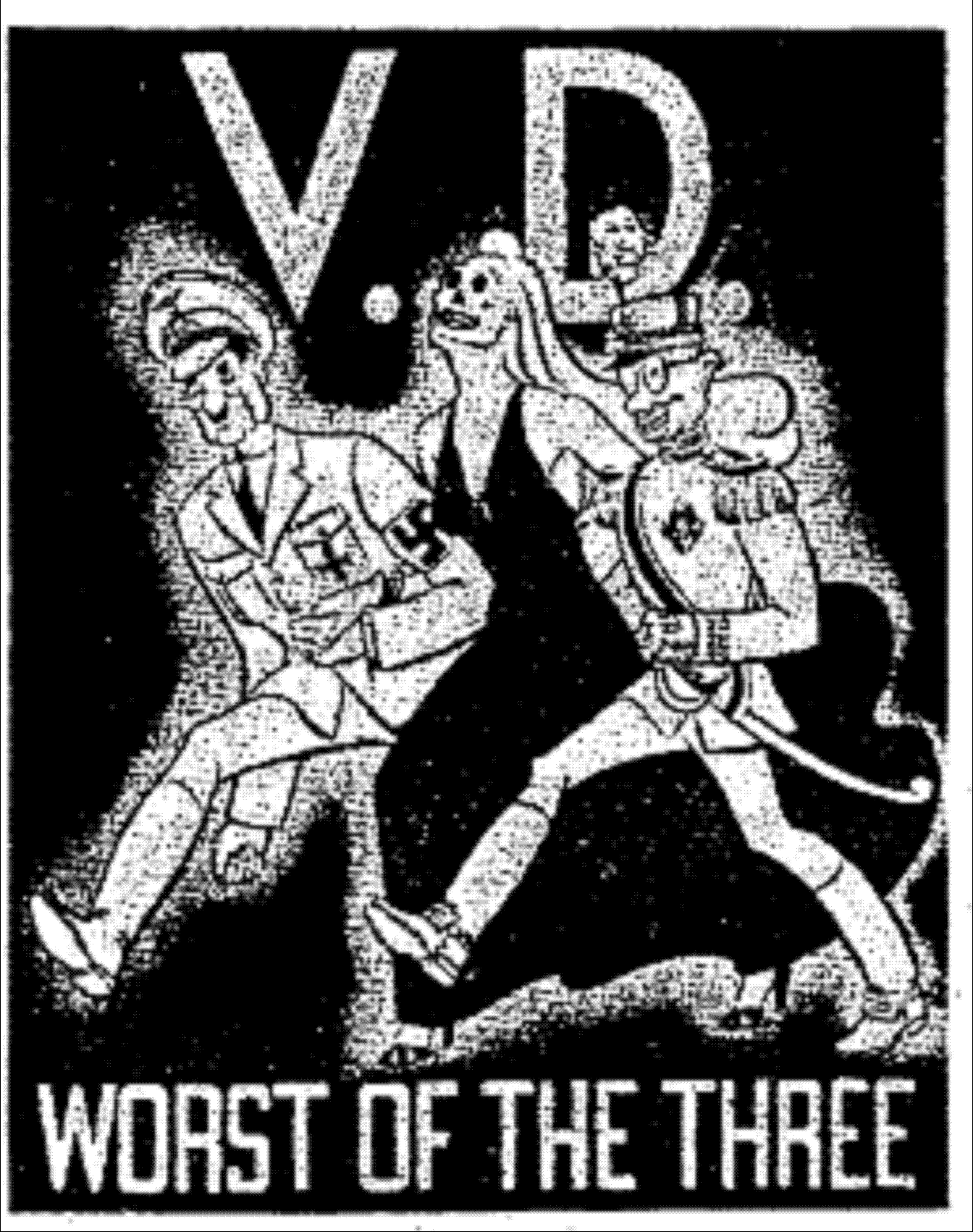
Here are three more:
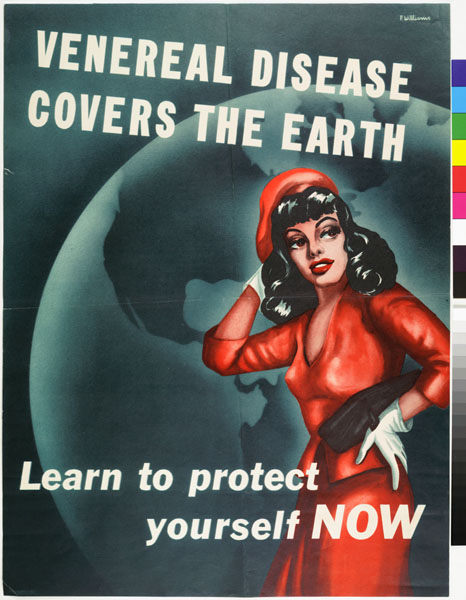
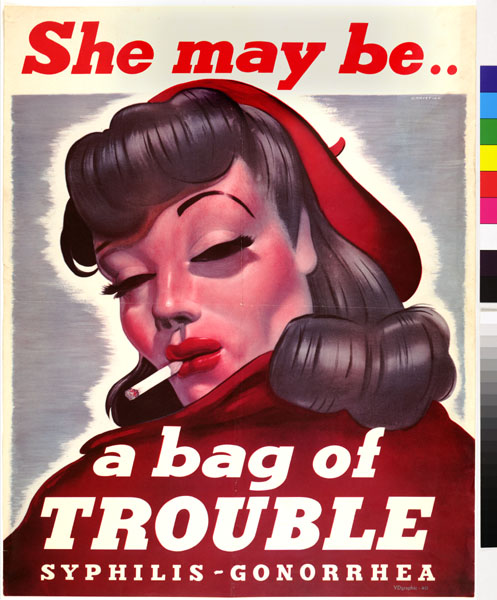
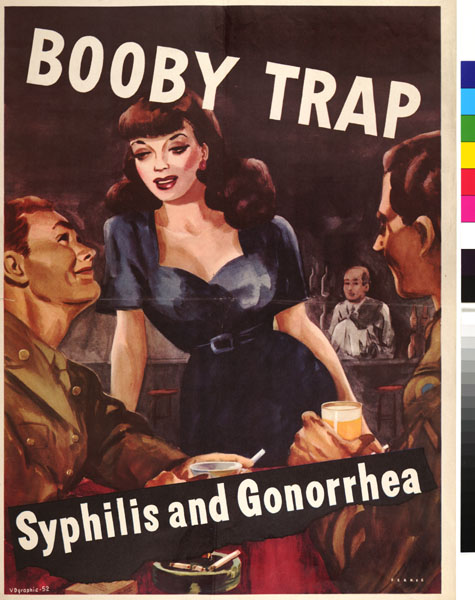
At least some of these can be found here. Thanks to the unbeatablekid pointing out a source in our comments.
NEW: Marc sent us a link to these images (all found here):
A pamphlet distributed to soldiers:
Thanks, Marc!

This “Onslaught” ad by Dove has garnered a lot of attention and positive press:
The idea, of course, is that we need to protect our daughters from the images that may harm their self-esteem or make them uncomfortable about their bodies. A great message, no doubt.
However, corporate activism usually has limits and contradictions (as do most things in life, really). Miguel sent us this ad spoof that points out that many of the images the Dove ad says we should be protecting our daughters from are actually used in Axe ads–and Axe is owned by Unilever, the same company that owns Dove.
So Unilever manages to target both markets–those who respond to sexualized images and those who find them harmful–through different brands. This is a common tactic–because large multinational companies own so many different brands, they can market to many different groups of consumers; when we reject one product because of its production process or advertising and buy another instead, there’s a very good chance we’re buying from the same corporate entity, just a different brand name.
As one blogger nicely put it:
It’s a parent’s responsibility to make sure the damaging messages they themselves produce don’t reach your kids.
That is, Dove is telling parents to protect their kids, as if Dove CARES, but Dove’s parent company is producing those very same messages. (It’s kind of like a single corporation owning a beer company and running Alcoholics Anonymous. How very convenient for both.)
A commenter pointed out that Greenpeace made an ad based on Dove’s “Onslaught” commercial that brings up the effects of palm oil production in the destruction of forests in Indonesia:
Thanks, Dangger!
NEW: There is a terrific post at Moment of Choice about one woman’s experience auditioning for a Dove Real Woman commercial. From the post:
Under the guise of looking for women who felt truly comfortable in their own skin, no matter what they looked like, they asked us to bare all or most of it, to prove just how comfortable we really were…A young peppy assistant demonstrated how they wanted us to shake our hands in the air like we just didn’t care and do a full 360 for the camera and male judging panel.
It’s a fascinating inside look at a process most of us never take part in, and reinforces the fact that corporate activism often covers an awful lot of business-as-usual behind the scenes.
It is a norm for women in the U.S. to shave their armpits, but this is not the norm elsewhere, even in countries that have relatively a lot in common with the U.S. (like France I’ve been corrected). How did armpit shaving become the norm in the U.S.? And who benefited from this?
Vee the Monsoon sent us the following commentary and ad. It turns out, women shave in the U.S. today, in part, because of a concerted marketing effort on the part of companies that stood to profit from the creation of such a norm with the creation of anxiety about “objectionable hair.”
From The Straight Dope:
…U.S. women were browbeaten into shaving underarm hair by a sustained marketing assault that began in 1915. (Leg hair came later.) The aim of… the Great Underarm Campaign was to inform American womanhood of a problem that till then it didn’t know it had, namely unsightly underarm hair. To be sure, women had been concerned about the appearance of their hair since time immemorial, but (sensibly) only the stuff you could see. Prior to World War I this meant scalp and, for an unlucky few, facial hair. Around 1915, however, sleeveless dresses became popular, opening up a whole new field of female vulnerability for marketers to exploit…. the underarm campaign began in May, 1915, in Harper’s Bazaar, a magazine aimed at the upper crust. The first ad ‘featured a waist-up photograph of a young woman who appears to be dressed in a slip with a toga-like outfit covering one shoulder. Her arms are arched over her head revealing perfectly clear armpits. The first part of the ad read “Summer Dress and Modern Dancing combine to make necessary the removal of objectionable
hair.
From the May 1915 issue of Harper’s Bazaar:
Thanks Vee!
NEW! Another example from the U.K., 1934 (found here). This one encourages the dissolving of armpit hair as a way to fight armpit odor:
At the Los Angeles Times, found via Scatterplot.
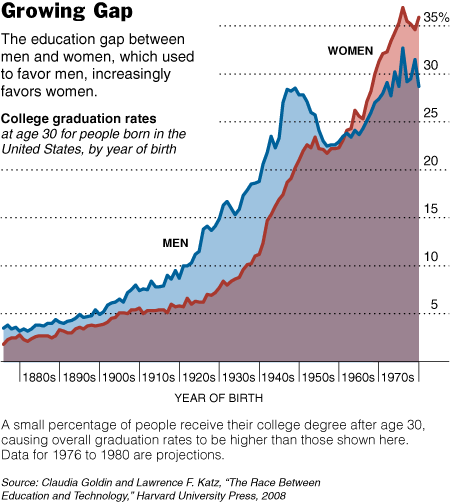
There are other things interesting about this graph too. (1) The overall increase in the percentage of the U.S. population who attends and graduates college… and thus changing ideas about who “needs” a college degree. (2) The fact that the gender difference wasn’t extreme in the late 1800s at all and increased in the early 1900s. (This is in contrast to most students understanding of history, in my experience, as a linear story of progress from backwards to enllightened.) (3) The spike in college enrollment and graduation after WWII (GI Bill… but how does that explain the stats on women?). (4) The weird dip in 1950s (I don’t know what that’s all about). And, (5) the period of near parity in the 1960s. (In the comments, Penny points out that I mis-read the graph in haste. I apologize.) (3) The weird dip for people born in the 1950s and coming of age in the 1970s (I don’t know what that’s all about). And, (4) the period of near parity for people born in the 1960s and coming of age in the 1980s.
See the accompanying article at the New York Times.
Jane created this awesome visual of how brands inhabit our lives, from dawn until dusk:

Thanks to Kevin for sending it along!